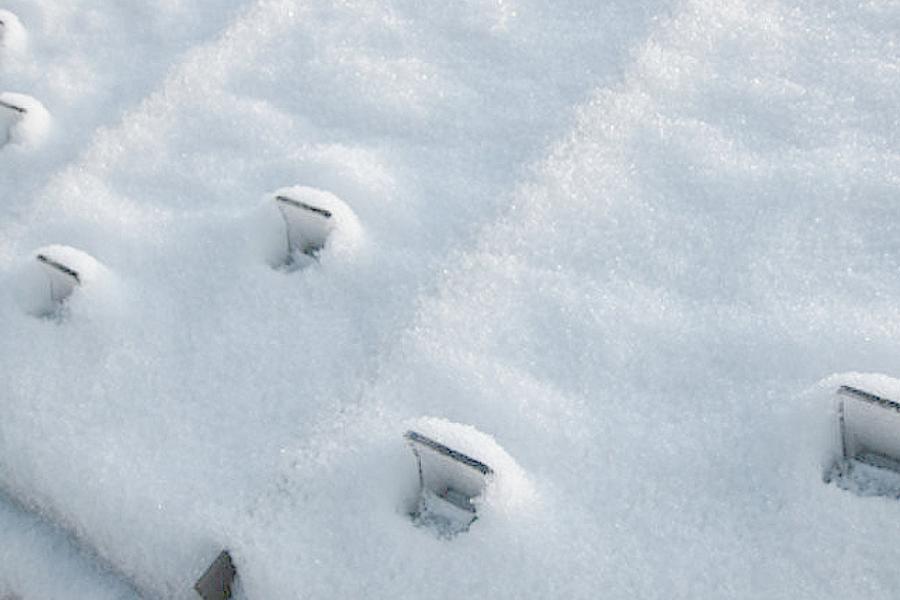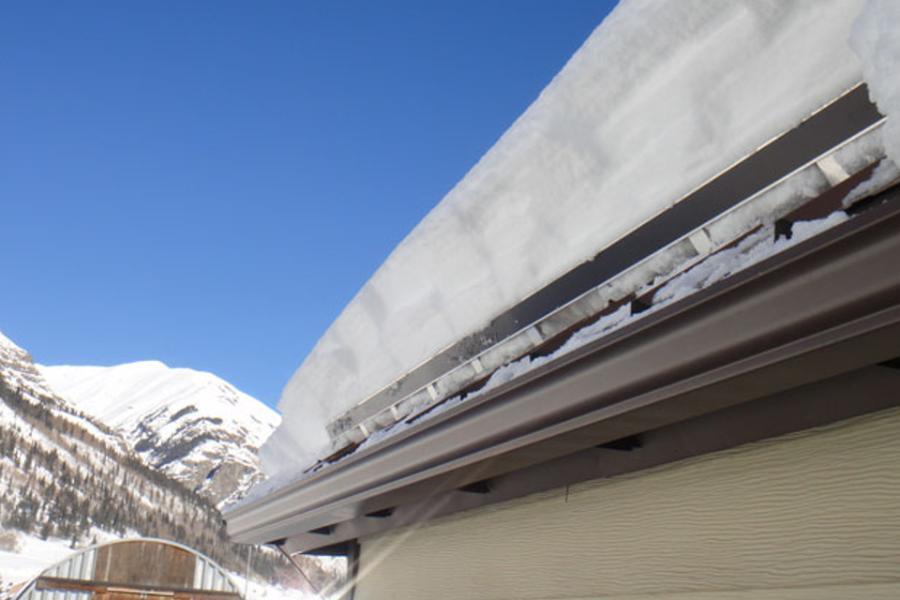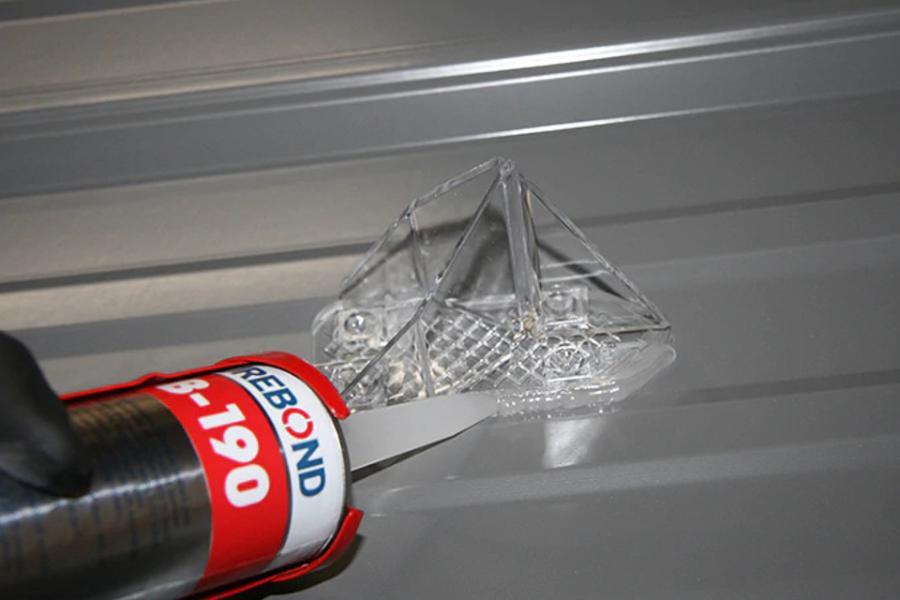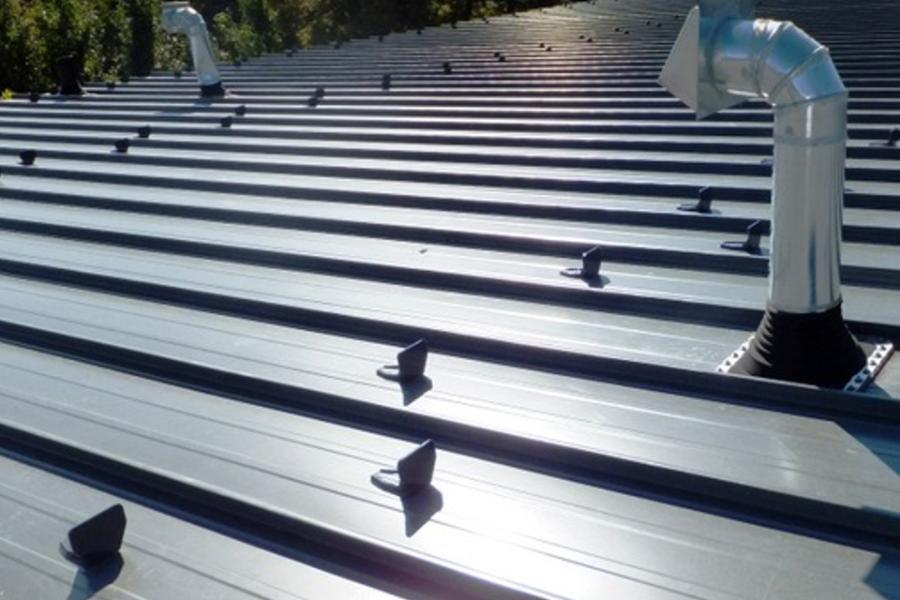6 Pitfalls To Avoid When Selecting the Perfect Snow Guard for Your Metal Roof
Posted by Derek Gamble - SnoBlox-Snojax Specialist on Feb 7th 2025

Why Do I Need Snow Guards for My Roof?
Winter poses unique challenges for buildings with metal roofs, particularly those with exposed fasteners and standing seam designs. The smooth surface of these roofs increases the risk of sudden snow and ice slides, which can be hazardous to people, pets, and property below. SnoBlox-Snojax has developed specialized snow retention systems for metal roofing to mitigate this danger. These systems incorporate adjustable snow guards and rail configurations that installers can customize to suit various roof designs, effectively managing snow accumulation. Implementing these protective measures requires careful consideration of several factors, including roof slope, panel layout, and local weather patterns. Various educational resources, such as our blog articles, online guides, and up-to-date lists of compatible metal panel manufacturers, are available to help property owners make informed decisions. By focusing on education and innovative designs, these solutions aim to reduce the risks associated with snow and ice buildup, creating safer environments in areas prone to heavy snowfall. These tailored approaches enhance safety and give property owners greater peace of mind regarding their roofing systems. Architects and engineers design snow retention systems to prevent unexpected snow slides, protect buildings from damage, and shield homeowners from potential liability issues. However, with numerous suppliers claiming to offer the best products, selecting the right snow guard can be challenging. This guide identifies six critical factors when choosing a snow guard or snow retention system. This guide is valuable for experienced contractors and homeowners seeking a well-informed purchase decision.

Costly and/or Dangerous Hazards Are Often the Result Of:
1. Subpar Materials
Snow guards are vital safety components that should match the longevity and durability of your roof. Opting for low-quality or incompatible materials can significantly shorten their lifespan. Multiple manufacturers offer various material options, but we recommend selecting guards, bars, or rails made from the following materials:
100% Virgin Polycarbonate
Polycarbonate is an excellent material for snow guards due to its exceptional combination of properties. It offers remarkable durability and strength, over 200 times stronger than glass and highly resistant to impact and breakage. Polycarbonate's weather resistance allows it to withstand extreme conditions and temperature fluctuations. At the same time, its optical clarity ensures the snow guards blend seamlessly with the roof's appearance. The material's longevity can exceed many years with proper UV stabilization, even under harsh conditions. Its chemical resistance makes it suitable for various environments, including coastal areas. Roofers install polycarbonate snow guards using adhesives or mechanical fasteners, depending on the roof's specific characteristics. Polycarbonate snow guards offer versatility in application. Additionally, it contributes to sustainability efforts as a 100% recyclable material. These combined properties make polycarbonate ideal for manufacturing effective, long-lasting, and visually unobtrusive snow guards.
Aluminum
Aluminum is an exceptional material for snow guards due to its outstanding combination of properties. Its natural corrosion resistance ensures durability in harsh winter conditions. It is remarkably lightweight yet strong enough to support heavy snow loads without adding significant weight to roof structures. Aluminum snow guards typically offer a long lifespan, making them cost-effective. The material's versatility allows for easy shaping into various designs. It can be anodized or powder-coated in multiple colors to match different aesthetic preferences. Additionally, aluminum's low maintenance requirements, recyclability, and ability to withstand extreme weather make it an ideal choice for snow retention systems. These characteristics collectively make aluminum superior for manufacturing snow guards, providing reliable protection, longevity, and performance.
Stainless steel
Stainless steel is an exceptional material for snow guards due to its durability, strength, and corrosion resistance. Its unique properties allow it to withstand heavy snow loads, extreme temperatures, and constant environmental exposure without deteriorating. The material's inherent resistance to rust ensures a long service life, making it a cost-effective solution for roof snow retention. Powder coating allows manufacturers to customize stainless steel snow guards, ensuring they complement roof designs without compromising structural strength. Their low maintenance requirements, ability to support significant snow weight, and resistance to UV degradation make them the premier choice for homeowners and builders seeking a reliable, long-lasting snow management system.
Gatorshield Galvanized Steel
Gatorshield Galvanized Steel is an exceptional material for snow guards due to its outstanding corrosion resistance, strength, and durability. With 50% more zinc than standard galvanized products and a triple-layer protection system, it offers remarkable rust prevention and structural integrity. The material boasts a high yield strength, providing superior load-carrying capacity compared to alternatives like aluminum. Its cold-forming capabilities allow for versatile design, while the ability to be easily painted or powder-coated ensures aesthetic flexibility. The material's domestic production, cost-effectiveness, and ability to withstand harsh weather conditions make Gatorshield an ideal choice for manufacturing robust, long-lasting snow guards that effectively manage snow and ice accumulation on roofs.
These materials can outlast or match the lifespan of metal roofs, which typically endure for 40 years or more. In contrast, cheap, inferior, and often foreign-sourced plastics and cast metals tend to become brittle over time, leading to cracks and fractures. We pride ourselves on the products we manufacture here in the USA!

2. Improper Fastening Methods
The way your snow guards are attached to your roof is crucial. Incorrect fastening can void roof warranties and cause long-term damage.
Ensuring Proper Attachment
For mechanically mounted snow guards, strong anchoring is essential. These should be attached to robust substrates such as sturdy wood decking or purlins. We recommend attaching directly to metal supports instead of depending exclusively on roof panels. If reinforcing weaker structures isn't feasible, adhesive-mounted options can provide a secure alternative. Explore advanced attachment techniques for metal standing seam roofs to maintain structural integrity. Consider seam-attached or adhesive-based solutions that preserve weatherproofing and comply with warranty requirements for standing seam roofs. Remember that Adhesive mounting of snow guards often requires extended cure times.
Waterproofing Techniques
Applying silicone sealant to screw-mounted polycarbonate snow guards eliminates air pockets and ensures a watertight base. While many of our metal snow guards come with waterproof gaskets, additional sealant can be applied as an extra precaution if desired. Some of our customers choose this additional step, though it is not a requirement.
Curved Roofs Precautions
Traditional flat pad-style snow guards often struggle to attach to curved roof surfaces. Roofing professionals must develop or source creative solutions for these unique architectural features.
Roofing Material Considerations
Acknowledge the distinct characteristics of more pliable roofing materials like aluminum and copper. Compared to more rigid steel roofing systems, these panels may require additional rows of clamp-on snow guards or snow rails when using those snow retention systems.
System Compatibility Confirmation
Thoroughly check the compatibility of all system components with your specific roof type before installation. This crucial step prevents expensive mistakes and ensures smooth integration. Consider testing individual components for a comprehensive compatibility assessment.
3. Limited Lifespan
When selecting a snow retention system, consider materials with extended performance lives:
Galvalume®-coated steel: 60+ years in most conditions
Aluminum: Approximately 40-60 years in most conditions
Polycarbonate: 10-25 years or more on average, depending on quality and maintenance

4. Insufficient Holding Strength
The holding strength of snow guards is a critical factor often overlooked. Rooftop equipment faces significant force from snow accumulation, making it essential to choose products tested by independent laboratories.
Industry recommendations include:
- 3-5 safety factors for adhesive installations
- 2-3 safety factors for mechanical attachments
The concept of "safety factor" in the context of snow guards is a crucial aspect of their design and functionality. This numerical value represents the additional strength built into the snow guard system beyond what is typically required. Essentially, it serves as a buffer, ensuring the snow guard can withstand not only expected loads but also unforeseen stresses or variations in snow conditions. This extra capacity acts as a reliability measure, providing a margin of safety that extends beyond the minimum strength requirements. By incorporating this safety factor, snow guard systems are better equipped to handle extreme scenarios, enhancing their effectiveness and dependability in protecting against snow and ice sliding off roofs.
5. Incorrect Installation Timing
Mechanically fastened snow guards and clamp-on bar and rail systems can be mounted any time of year as long as the roof surface is free of snow, ice, and debris. Adhesive-mounted snow guards, on the other hand, are best installed in late spring or early summer across North America. This period allows adhesives to cure properly, as some glues, like our preferred Surebond SB-190, require temperatures above 50°F (10°C) for about a month to set fully. While rain doesn't affect curing after the first day, cold weather can impede the process.
6. Adhesive vs. Mechanically Fastened Snow Guards Strategic Placement of Snow Guards
While glue-on snow guards are often more convenient and protect your roof from penetration, mechanically attached systems offer superior strength. Both systems, however, frequently require multiple rows up the roof slope for equal weight distribution. You will often find that, in most cases, adhesive-mounted systems require an extra row or two more than mechanically fastened systems. Proper positioning is also crucial for effective snow guard performance. Distribute them evenly across the roof to prevent uneven weight distribution, which could lead to system failure. Avoid clustering guards in isolated areas and follow our spacing guidelines for optimal results.
Conclusion
SnoBlox-Snojax delivers exceptional support for snow guard installations, focusing on durable and long-lasting solutions rather than quick fixes. Our company's primary objective is to ensure customers comprehensively understand our product range. SnoBlox-Snojax equips clients with the necessary knowledge and tools for successful implementation by combining personalized assistance with various resources. Customers can access support through direct communication with our team or by utilizing practical guides. At the heart of SnoBlox-Snojax's mission lies an unwavering commitment to quality and practical effectiveness, reflecting our passion for product excellence and customer satisfaction. To facilitate informed decision-making, we have developed valuable resources such as a Snow Guard Buyer's Guide and a "What Works and What Doesn't" page, offering crucial insights and practical information. SnoBlox-Snojax actively encourages customers seeking assistance with their orders to contact our support team via phone or email, ensuring they receive proper guidance for optimal results with snow guard products. This comprehensive approach, which combines expert assistance, educational resources, and a dedication to quality, enables customers to make confident decisions and successfully implement snow guard solutions.

